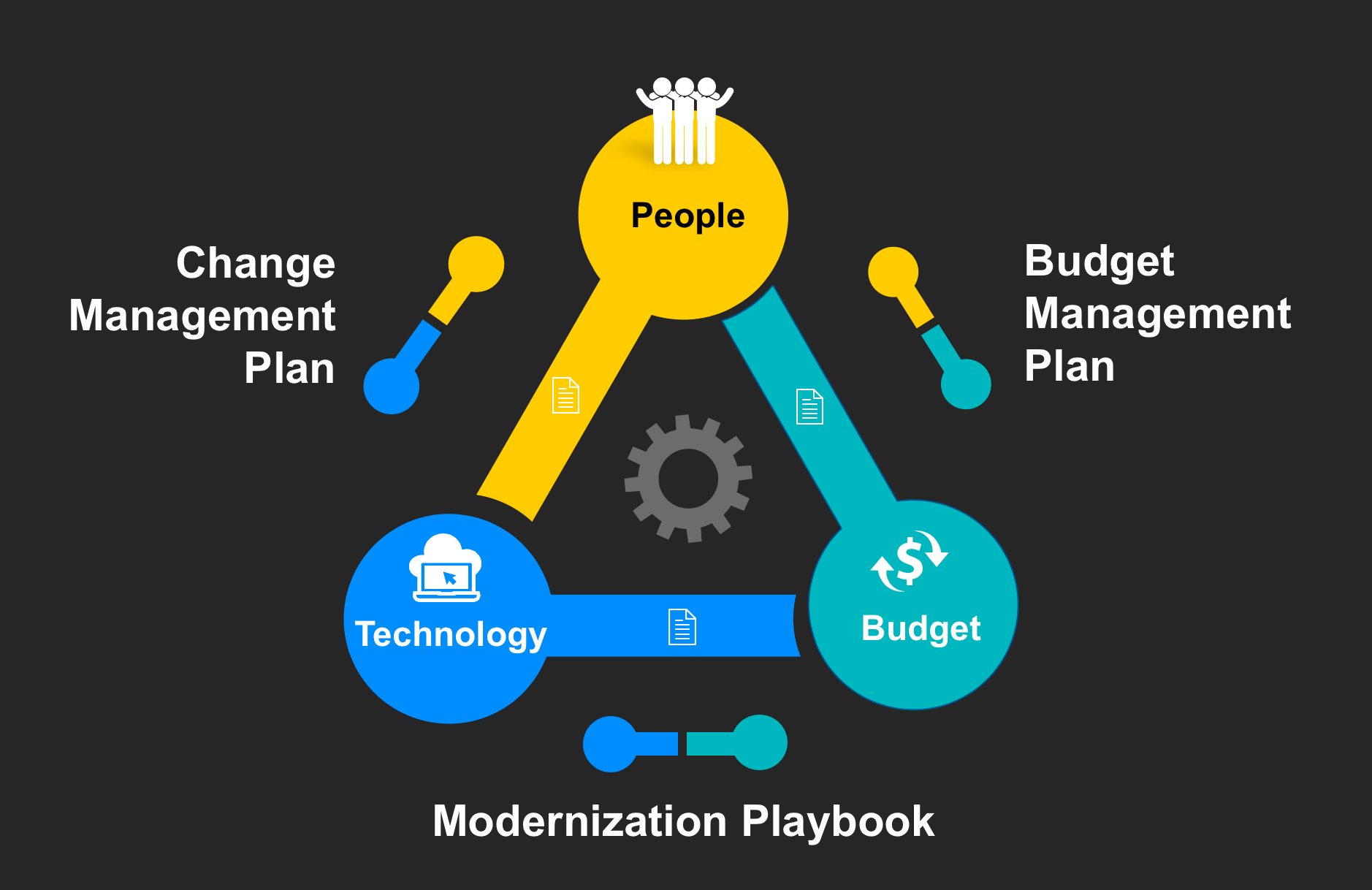Federal Modernization Requires Focus on Technology, Budgets and People

Artem Samokhvalov/Shutterstock.com
Here are tips for agencies looking to speed up their plans.
Modernization is more than upgrading antiquated systems; to do it right, agencies must take technology, budgets, and people into account. These three intersections represent quality, efficiency and business value, respectively.
Unfortunately, many agencies only focus on the technology part of this “Modernization Triangle,” but as recent legislative initiatives, including the Modernizing Government Technology Act, have pointed out, technology alone cannot address the issue. It is the smart application of technology, coupled with people-focused changes to longtime operating procedures, which will provide true business value and a good return on investment.
But first agencies must begin to meet their modernization goals, which has been somewhat of a struggle to date. According to a recent Government Accountability Office report 77 percent of agencies will not meet planned modernization goals by the end of 2018. That report also showed that many mission-critical federal systems are more than 50 years old, and that the agencies that run these systems have no plans to modernize them. This is especially challenging given that 72 percent of federal chief information officers surveyed said the majority of applications in their portfolio are legacy systems.
Agencies can accelerate their modernization plans by adhering to the Modernization Triangle, implementing a modernization playbook, and change and budget management plans.
The Modernization Playbook

A technology modernization playbook is table stakes for any modernization project. The playbook starts with the intersection of budget and technology and addresses the variety of plays in a modernization plan, such as: determining the technology stack, considering the user experience and deployment planning. Undergirding the plays is a foundation of security, cloud-first orientation and thoughtful governance.
The Modernization Change Management Plan
Here is where agencies plan for and take into consideration the effect that modernization will have on their greatest asset: their employees. Naturally, one considers the user when embarking on modernization projects however, IT shops will be the most impacted by the change that will inevitably occur. Consider the fundamental shift from networking skills in on premise systems to cloud-based architectures. In a recent survey conducted by IBM, 39 percent of senior agency personnel considered skills and experience to be the primary factors for their agencies’ inability to move to the cloud. The tooling and techniques necessary for success in this space will require tremendous preparation, training and mentoring.
The Modernization Budget Plan
This connects people and funding. Right now, there’s a big disconnect between what people want to happen (i.e., greater innovation) and what is actually happening. Looking at the total spend of IT, it is either focused on operations and maintenance, just keeping the lights on, or on development, modernization and enhancement, helping federal systems to move forward. Unfortunately, there is a terrible imbalance. Seventy-seven percent of the combined spend is focused on O&M. Agencies are functionally treading water. This trend has been going in the wrong direction for nearly eight years with O&M spending steadily increasing over time. Compounding this problem is the fact that real dollar DME spending is going down over time, decreasing by $7.3 billion in the past eight years.
Fortunately, recent congressional budget plans like MGT Act, may help reverse this DME trend. This legislation gives agencies the guidelines and funding to modernize and consolidate their networks and use shared services to enable future network architectures. It’s a good step in the right direction that matches the desire for more innovation with available fiscal resources.
Taking Things One Step at a Time
The road to successful modernization is navigated a step at a time. Teams should start by baselining services and related spend. Then, create modernization roadmaps that bake in cost reduction plans over shorter time frames (3-5 years). Finally, flip the DME to O&M ratio, focusing on small, frequent releases.
Most importantly, agency teams must recognize that any system modernization plan must focus on technology, funding, and people. The Modernization Triangle takes each of these points into consideration. The plans that it includes help to craft a complete approach to federal system modernization that goes beyond technology to address the organizational changes and how to capture, track and ensure the necessary reduction in funding required of these projects.
Todd Hager is the vice president of strategy, innovation and quality at Macro Solutions.
NEXT STORY: A Shutdown Smorgasbord for Tired Techies


